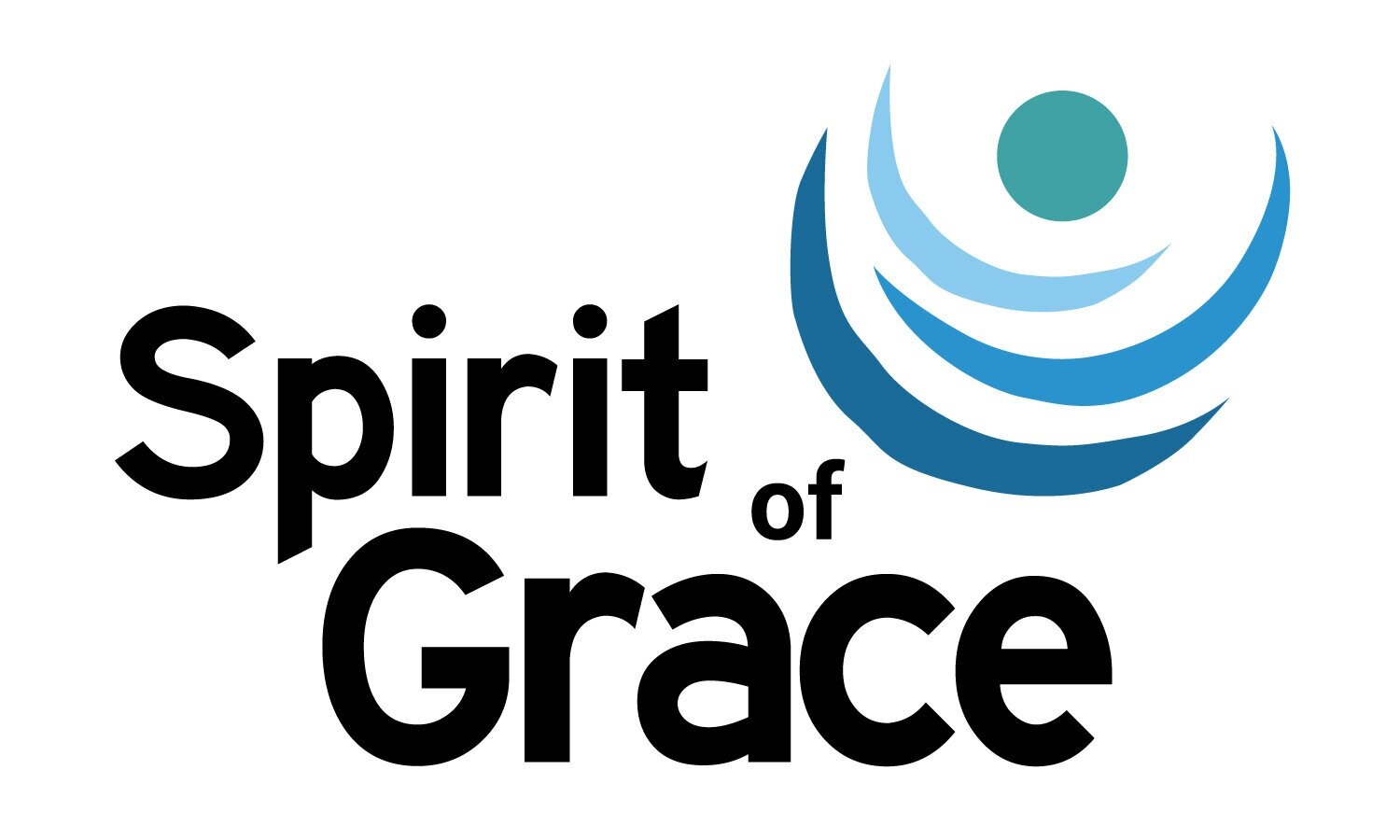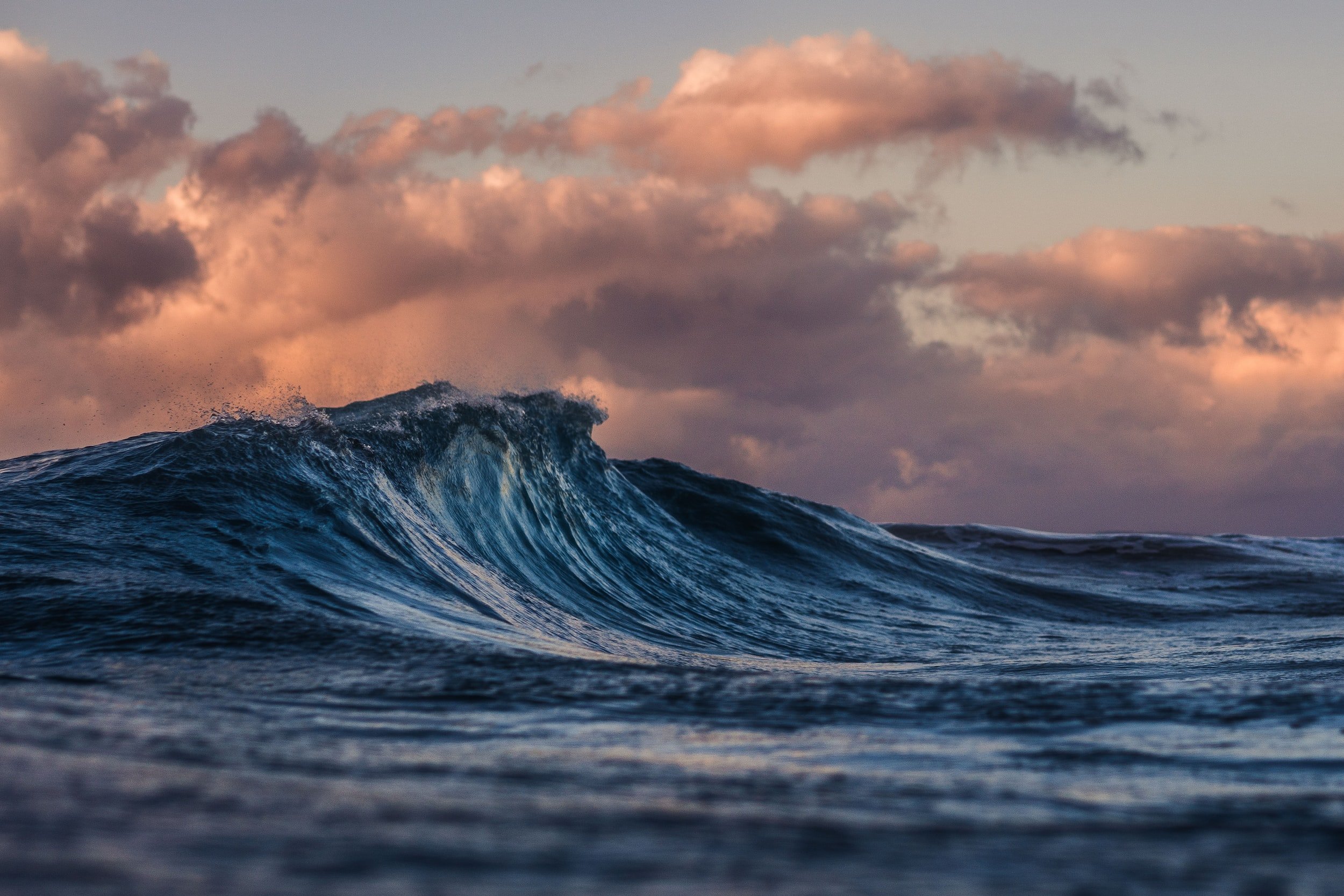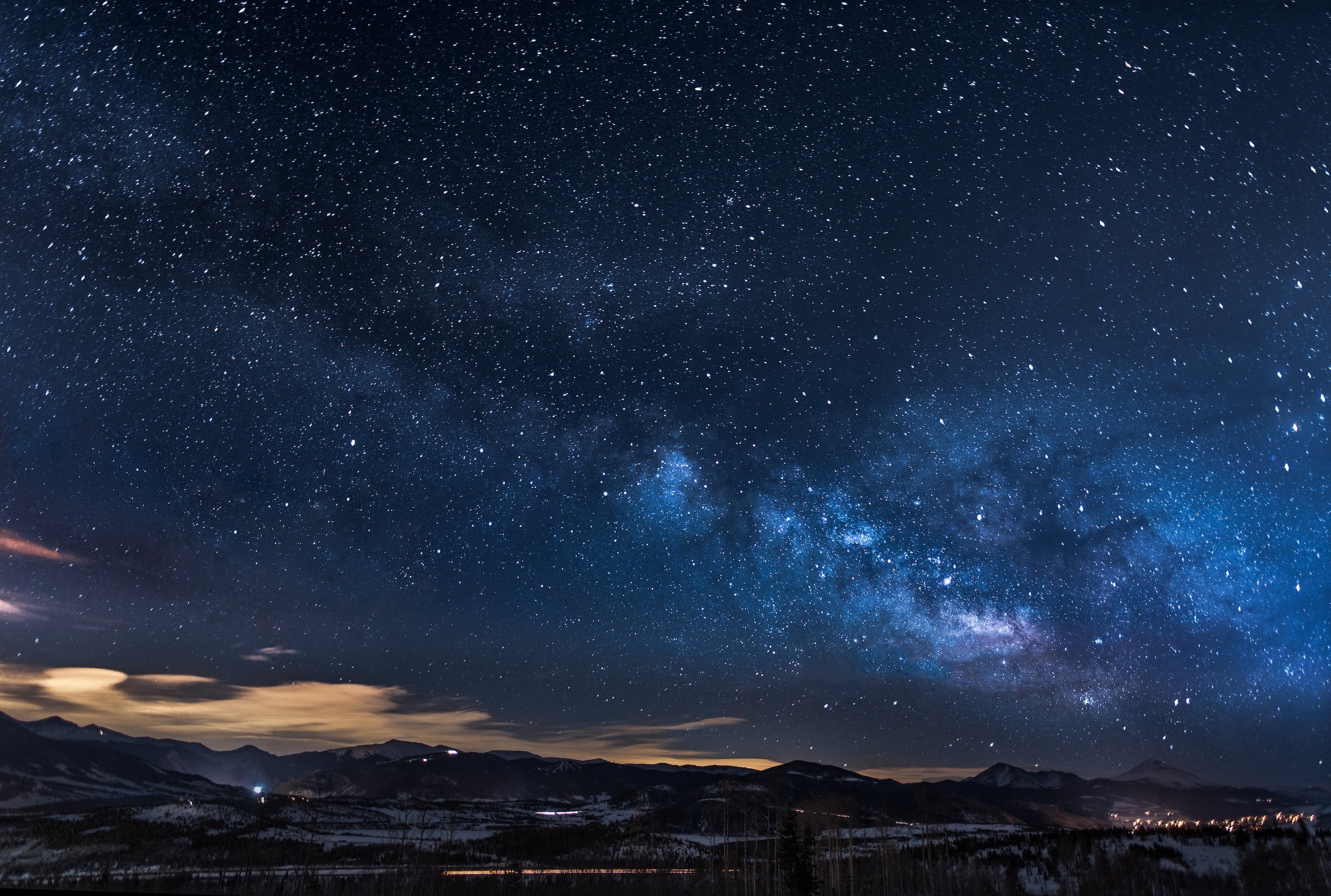Sermon by Elizabeth Hofrichter
Today marks the beginning of Creationtide. You may be familiar with this term, but if you are like me, I had no idea what it was. I mean, there are some clues.
The word creation was a hint, and I knew that many churches are celebrating a creation season right now, often inspired by the earth love and care theology of St. Francis, and as a response to our global climate crisis. But, that other word, “tide.” Well, after reading about it and speaking with the conceptual author of Creationtide, Pr. Brian Brandt, I understand both the intention and the term “Creationtide” a little bit better.
Elizabeth Hofrichter, Spirit of Grace’s seminary student
This year’s focus is on the Glory of Creation. Each year the focus is held in mind as we travel through a cycle or a process. The steps of this process are:
Beholding creation
Befriending creation
Reclaiming creation
Fulfilling creation
As the word “tide” in Creationtide suggests, this is a cyclical process. We start by beholding, which appears on the surface as small, like the beginning of a wave, it builds and grows as we befriend and reclaim creation. It rushes to the shore as it is fulfilled, only to be swept back out again. And the process begins anew once more.
But today we start with that seemingly small beginning, Beholding.
Now, to be sure, beholding creation is quite a broad topic. Like “behold all of creation!” (But keep it to a 15-20 minute sermon.) Where do we even start?
Well, I’ll do my best to focus and hopefully your mind will wander like mine and you can ponder this all week. We will hone in on two words today- behold and all.
I am a bit of a word nerd, so let’s start with this word behold. This is definitely a word we hear when reading the bible, especially the NKJV, where it appears over 1,000 times. But, rarely do we use this word in our day-to-day lives.
“Behold! I got a new job.”
No, we don’t use this word. But, this word is meant to get our attention.
Today, we might say, “Hey! Check this out!” Or, “Listen up!,” or “if you get nothing else, understand this.”
And, if you’re in the academic world, as I currently am, “this next part will definitely be on the exam.”
The Greek, Hebrew, and even old English meaning of this word all represent that which means “be sure to see” or “thoroughly hold and retain.” So, let’s see how this works.
“God saw everything that God had made and indeed it was very good.” Gen 1:31.
God saw everything, and called it “very good.” If you notice, at the end of each step of the creation story in Genesis 1, God names that part of creation as good. When it is all finished, it is named “very good.” The whole thing.
I don’t know about you, but I notice that creation is often seen as this separate thing. There is God (up), us (middle), and nature/creation (down). Another way to look at creation, is as one, united, flowing, interrelated, interconnected living, breathing, entity.
Kelly Brown Douglas, in her book, Stand Your Ground, says this: “everything God creates has sacred value because it is intrinsically connected to God.”
She suggests there is no sacred/secular division.
In his book, The Power of Ritual, Casper ter Kuile, points out this vertical line we tend to draw that separates sacred and not sacred. Instead, he suggests we should imagine a horizontal line that represents shallow and deep that runs through everything, all parts of our lives, and all of creation. And that the sacred is going to that deep level with anything and everything within creation. So, let’s go deep.
Now, I feel grossly inadequate at being able to describe the magnificent, radiant beauty that is the Glory of creation. So, instead, I will ask some questions.
Feel free to close your eyes and picture what my language only scrapes the surface of. Have you ever gone for a hike? Did you notice the enveloping tree canopy, the vibrant green moss, the exposed roots on the surface of the earth floor?
Have you ever sat by a river or a babbling creek and just let the trickling or rushing water sounds calm your soul? Have you ever stood by the ocean, listened to the crashing waves, noticed the vastness and power of it all, and how it made you feel both small and large all at the same time?
Have you ever gazed at the starry night sky, wondering how many stars there could possibly be, and if you might just float out there yourself if you happen to let go? Have you ever looked at an insect closely? I mean really close-up, like face inches from a bee and you felt the fear and curiosity, noticed their tiny body pulsing and their delicate wings quivering?
Have you ever noticed the veins that run through a leaf look strikingly like the veins that run in our flesh? Have you ever just grabbed a handful of dirt or sand and let it fall to the ground slowly as you inspect each and every grain?
Have you ever taken notice of a tree over the course of seasons, watching buds sprout, bloom, give way to leaves and fruit, drop that fruit, drop those leaves, and seem almost dead, before sprouting again? Have you ever let yourself just marvel at the way our bodies breathe? How our hearts beat on their own accord?
Now, think of that part of creation that makes you just stop and breath a deep breath, something from which you just can’t look away. It might be a sunset, details on a butterfly wing, moss on the trees, ocean waves, etc. If you haven’t already, close your eyes, hone in on that image or experience, and breathe it in. Sigh it out.
Open your eyes. This is one way to behold creation. This could be your focus in a centering prayer. You might meditate on this image or experience.
Even better, you might go outside and actually try some of the things we just imagined. Get into the elements- the air, the water, the dirt.
Recognize the divine balance of this creation that includes us. The interaction of our breath taking in oxygen and letting out the very thing the trees need to breathe, and then their exhale is our next inhale.
One of my favorite ways to do this is to meditate while running or swimming. Alone with breath. In and out. The challenge here is to just be in creation, truly see and be aware of our place within creation.
In the book of Exodus, God told Moses of God’s name: I am. No descriptor, no action, no comparison, just being. A reminder to just be. And what is more, is that this name in Hebrew had no voiced vowels, that got added later, it was only to be breathed. YH(in) WH (out). A reminder again of the very breath we need to survive is the same breath that calms us, reorients us, and postures us to behold.
Okay, that was the easy part. I said we would be focusing on two words: “beholding” and “all.” Well, here is the rest of all.
See, Creation is made in the image of God, a God that is represented by a complex myriad of glory. God’s glory has two sides, and everything in between. Often God’s glory invokes the radiance, the splendor and magnificence, this overwhelming beauty and goodness.
But the Hebrew word for glory (last word we will dissect, I promise), is havod (hah-vode), which has another meaning: weightiness or heaviness.
This glory describes an impressive, honorable, and prominent being. In Exodus, Moses is deemed the only one capable of getting close to this glory of God, and even then cannot look God’s glory in the face for fear of death.
This same glory is revealed in Scripture again during the Israelites’ time in the wilderness and the building of the tabernacle. The glory of God appears as a pillar of fire and smoke to lead their way, and a smoke-like presence that fills the tabernacle upon completion. It is always kept at a safe distance or locked within the holy of holies, due to its overwhelming power and strength.
What seems to be a dichotomy of character is just two ends of a spectrum. This same imprint is on all of creation. This dichotomy of what we deem as beautiful and dangerous is reflected in the cyclical flow of creativity (new life) and destructivity (death). This can be awesome and scary.
This looks like supernovas, which when they die, their explosion sends out the very elements and energy needed to create new solar systems. This is how our very sun and solar system were born. We see this in the weather, like storms and fires. We see this in the natural process of trees dropping all of their ornamentation in order to plant seeds and allow leaves to decay and create the rich soil for new things to sprout to life. We see this in our bodies, all animal bodies that die and give way to new life, through enriching the earth or becoming food for other creatures.
I think it is important here to point out the difference between the divine creation and destruction cycle and the sin that is human abuse and domination over other parts of creation, whether nature or other humans. Yes, I name this as sin, a collective sin.
Sin is not just between us and God, but between us and creation. There are things we don’t control in creation, and there are things within our control.
Genesis has 2 creation stories. Genesis 1 says that God made humans in God’s image and gave them dominion over the creatures of the earth.
In Catherine Keller’s book, On the Mystery, she refers to one of her teachers, John Cobb, who smartingly says that “this is the only command in the Bible that we have managed to obey!”
However, in the other creation story in Genesis 2, it says that God made humans out of the dust and earth, in order to “till the ground,” “to till” the garden and “keep it,” so it could grow. Here, the man names the animals.
Unfortunately, the first creation story, which uses the phrase “dominion over” has reigned dominant. It has been mistaken as domination and not care.
Genesis 2 reminds us of the privilege of tilling and caring enough to give name to creation. There is a short video called The Awakening Universe, which is based on the book, The Universe Story by Thomas Berry. It’s worth a watch.
It shows how we all come from the same beginning point, made of the same stuff. Humans are the most complex of this creation; since we are able to reflect on our own existence, “we are the universe reflecting on itself; we are earth become conscious.”
If we are going to reflect on the beauty, we also have to take in the weighty and heavy side of creation. We have to be conscious of the damage and the scary parts. We have to truly see, to behold.
This is not easy. I struggle with this. But, if we look away because it is too hard, it becomes an excuse for inaction. We must look right at the ecological suicide that is overtaking creation. The earth is suffering: our storms are getting bigger and more frequent, our temperatures more extreme, our waters and air polluted, our food full of hormones and toxins, we kill animals and trees without consideration for the delicate balance of our ecosystem.
We pave paradise and put up a parking lot (Joni Mitchell). And we know that all of these things affect the most marginalized people. We see the way creation is used and discarded and we see the way people are used and discarded. We see immigrants used as political pawns. We recognize our institutional complicity in placing some of God’s creatures above others.
How are we supposed to behold this? It is overwhelming. It is too much.
I would like to share with you a spiritual practice I learned from a Spirit of Grace member, Don Manghelli. Tonglen is a Tibetan Buddhist practice of meditation, which means “giving and taking” or “sending and receiving.” I have found this to be helpful when I need to sit with and/or pray for something or someone that is painful.
As you begin this practice, you think of the pain and grief, the sadness and loss of who you’re praying for and you breathe that in, taking it into yourself. On your exhale, you breathe out healing, hope, or whatever you wish for that person. This, I believe, can be done with all of creation. Let’s try it now.
Close your eyes and picture something that is harming creation right now- maybe the wildfires, the floods, the devastation of hurricane Ian, the people who are without due to inequities in our systems, any part of creation that is hurting.
Now, breathe in that pain, loss, suffering. Let it fill your lungs, let it fill you, become one with this part of creation. Then, breathe out all of the healing, beauty and goodness that you wish for creation. Sending it out as a blessing.
Open your eyes. This feels heavy. It should. And we aren’t used to it. I find it interesting that there is a book out right now called Permission to Feel. It’s actually a very good read. I highly recommend it. We are not used to really feeling things; really sitting with those feelings. We are not used to beholding all of this world, both the beauty and the pain.
Churches are good at hope, looking forward, and celebration. Sometimes, we forget to lament. We see laments throughout the Bible: Abraham bargaining, Rachel mourning, Job protesting, the Syrophoenician woman pressing her case, Jesus crying out to God.
In Ruth C. Duck’s Worship for the Whole People of God, she reminds us that laments can be done by “naming situations honestly, asking God for help, evoking trust in God’s healing and justice, and complaining when God seems silent.”
We need to lament and grieve this. We need to behold this.
If you’re like me, seeing the beauty and worthiness of all creation next to the horrors and damage being done makes you want to move, to act, to do something.
We will get there in the weeks to come: in befriending, reclaiming, and fulfilling creation.
The challenge today and this week is to behold, thoroughly hold, the creativity and the destruction, both sides of the glory of creation, and stay there for a time. Let the glory of creation stop us in our tracks and correct our posture, our posture toward all of creation. Model it for those around you. Share with others how you are beholding creation, both the magnificent and the upsetting. Show how it moves you: both into emotion and into the desire to act.
And yet, there is hope. This pattern—the cycle of life, the destruction and creation, the death and resurrection—is imprinted in our hearts, in nature, and in the paschal mystery of Jesus Christ.
Creationtide represents an ebb and flow, a swelling, a cresting, and a crashing, in order to swell, crest and crash again.
So, we rest now on the trust of knowing there is the promise of the rebirth, the resurrection. And we have been deemed co-creators with God in this work.
In the words of Stuart Kauffman, “The universe in its persistent becoming is richer than all our dreamings.”
Throughout the week as I was preparing, I found myself singing the Doxology. I grew up in the Presbyterian church and it was part of our Sunday liturgy.
I kept thinking about praising God as beholding everything that God has made, and the words “all creatures here below” reminding me that creation is one and connected. For the dismissal today we will sing the Doxology together.
Consider with me these words anew: behold and all. Let this stay with you through the week, as you continue to ponder all of these things. And find your own ways to behold the glory of creation.
Amen.
Elizabeth with Pr. Robyn Hartwig











